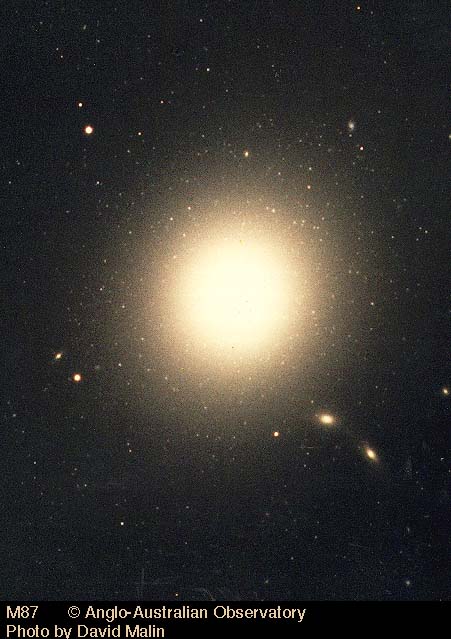neufer wrote:
- M101 has a disk mass on the order of 100 billion solar mass.
That clearly excludes dark matter mass and other components.
(M101 also has over twice the number of stars as the Milky Way.)
I've tried and tried to confirm your claim that M101 has over twice the number of stars as the Milky Way. The claim that M101 has a trillion stars, 10
12 comes from
Wikipedia. But Wikipedia itself doesn't provide a link to its claim.
But I decided to try to find out how many stars there are in Malin 1, a tremendously huge low-mass surface brightness galaxy. That, too, provided extremely frustrating. Nevertheless, I did find this:
Malin 1. Galaz et al., 2016/NASA/JPL-Caltech
Ken Croswell wrote:
Discovered in 1986, Malin 1 is the largest spiral galaxy known. Its spiral disk is 650,000 light-years across--several times bigger than the Milky Way's--but the stars are so spread out from one another that the disk looks extremely diffuse, having what astronomers call a low surface brightness.
...
Despite its diffuse light, Malin 1 emits eight times more light than the entire Milky Way, which is itself a giant galaxy. Furthermore, Malin 1 abounds with gas, containing 50 billion solar masses of atomic hydrogen gas--more than ten times the amount in the Milky Way.
...
Within 30,000 light-years of Malin 1's center lies a normal barred spiral galaxy having a Hubble type of SB0 or SBa. The galaxy's central bulge is 10,000 light-years across, and its bar is 30,000 light-years long. The disk is smooth with no signs of dust lanes or star-forming regions.
...
(Aaron) Barth calculates that 80 percent of Malin 1's light comes from that extended disk, not from the normal disk he has discovered.
According to Wikipedia, which links to Barth, Aaron J. (March 2007). "A Normal Stellar Disk in the Galaxy Malin 1". The Astronomical Journal. 133 (3): 1085–1091. arXiv:astro-ph/0701018], Malin 1 has a mass of about 10
12 solar masses. That would be about ten times more than the disk mass of M101, according to
https://en.wikipedia.org/wiki/Pinwheel_ ... 01_mass-11] and Comte, G.; Monnet, G. & Rosado, M. (1979). "An optical study of the galaxy M 101 - Derivation of a mass model from the kinematic of the gas". Astronomy and Astrophysics. 72: 73–81.
Okay, let's see now. Malin 1 emits eight times more light than the Milky Way - doesn't that mean that it must contain many more stars than Milky Way? Alternatively, it might mean that the individual stars of Malin 1 are, on average, brighter than the stars of the Milky Way. Okay, that's possible:
S. Boissier et al. wrote:
Based on our model, the extreme disk of Malin 1 is found to have a long history of relatively low star formation (about 2 M
⊙ yr−1).
The star formation rate of the Milky Way is believed to be about 1 M
⊙ yr−1, so Malin 1 would convert twice as much gas into stars as the Milky Way during a given year. This higher rate of star formation in Malin 1 would also produce a larger number of high-mass and therefore more luminous stars. As for M101, it has definitely produced a terrific number of high-mass stars!
Let's assume that the number of stars of Malin 1 is either somewhat similar to the number of stars in the Milky Way, or somewhat higher, perhaps double that of the Milky Way. But Malin 1 has ten times more gas than the Milky Way. Of course, Malin 1 is definitely more massive than the Milky Way, too, perhaps twice as massive. To me, it's hard to believe that Malin 1 doesn't contain a lot of dark matter, too. Or perhaps it doesn't? Could it be that Malin 1 has formed out of a huge blob of gas that has somehow "come loose" from its dark matter moorings. So perhaps the Milky Way contains more dark matter than Malin 1 - and perhaps more dark matter than M101, too?
Questions, questions. I will stop discussing the mass and the number of stars of M101, Malin 1 and the Milky Way now!
Ann
 A View Toward M101
A View Toward M101



